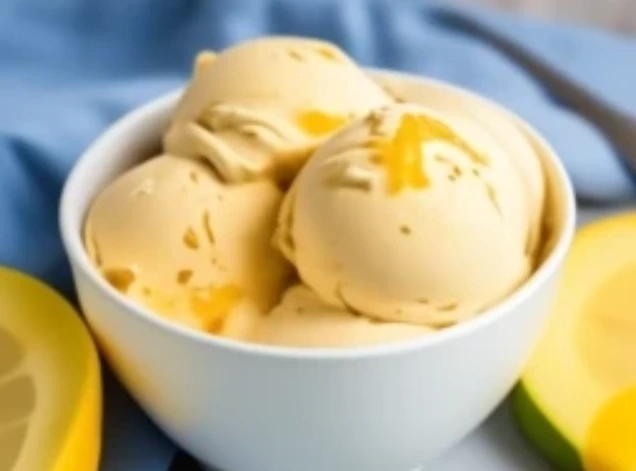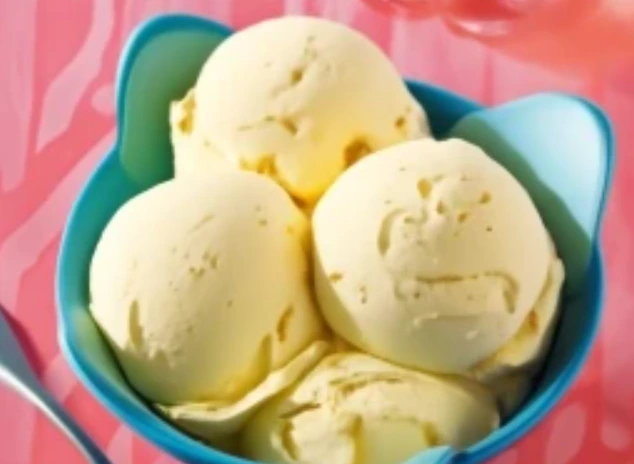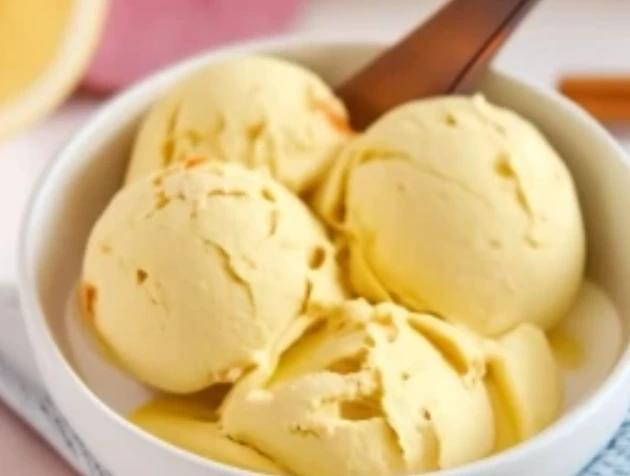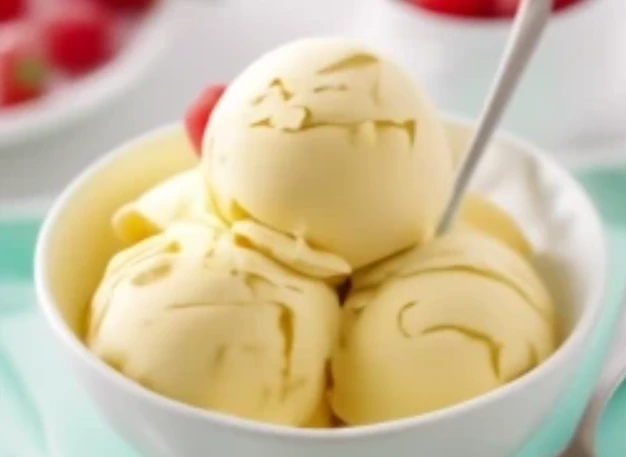
Recipe Type: Dessert
Cuisine: Filipino
Target Audience: Families, beginner cooks, and those exploring unique, floral desserts
Sampaguita ice cream recipe:
Table of Contents
Sampaguita ice cream recipe, also known as Jasminum sambac, holds a special place in Filipino culture. The flower’s significance stretches beyond its delicate petals and aromatic scent—it symbolizes purity, humility, and simplicity. Often found adorning religious altars, in leis for celebrations, or as offerings, Sampaguita has deep cultural roots. But have you ever considered it in the context of food? Sampaguita’s gentle fragrance and subtle sweetness translate wonderfully into culinary creations, lending an almost ethereal quality to dishes.
This Sampaguita ice cream recipe is a true celebration of floral flavors. The unique floral aroma transforms a simple dessert into an exotic, luxurious treat. Imagine the fragrance of Sampaguita wafting through the warm tropical breeze—now, imagine tasting it in a creamy, dreamy frozen dessert. That’s what this Sampaguita ice cream recipe offers: a connection to the Philippines through flavor.
While ice cream is often seen as a decadent indulgence, this particular sampaguita ice cream recipe is also light, using plant-based ingredients such as coconut milk and cream. That makes it perfect for those who are dairy-free or vegan, but also for anyone seeking a healthier alternative without sacrificing flavor. Coconut, known for its heart-healthy fats, provides the perfect base for this sampaguita ice cream recipe, offering richness while keeping it light and refreshing.
This Sampaguita ice cream recipe is not just about satisfying a sweet tooth, it’s about creating an experience. This Sampaguita ice cream recipe is versatile enough to be enjoyed on its own or paired with tropical fruits, and it can be made at home with minimal equipment. Whether you’re a beginner in the kitchen or a seasoned cook looking to try something new, this Sampaguita Ice Cream is a wonderful way to explore both Filipino culture and floral cuisine.
Ingredients List:
Here’s where the magic happens. The ingredients you choose affect the taste and texture of the Sampaguita ice cream recipe and its health benefits. Let’s break down each component:
- 2 cups coconut milk – The base of this ice cream, coconut milk provides a rich and creamy texture while maintaining a mild flavor that complements the floral notes of sampaguita. For a lighter version, you can use almond or cashew milk, but the richness may be slightly reduced.
- 1 cup full-fat coconut cream – This adds a lush, velvety mouthfeel to the ice cream. Full-fat coconut cream is essential for creating a dense, creamy texture, but if you want to avoid coconut, you could substitute soy cream or another non-dairy alternative. Keep in mind, though, that coconut cream gives a tropical flavor that complements sampaguita beautifully.
- ½ cup organic cane sugar – A necessary component for sweetness, cane sugar dissolves smoothly into the mixture. You can substitute agave syrup, maple syrup, or coconut sugar for a lower-glycemic option, but these alternatives will slightly alter the flavor and color of your ice cream. Agave is neutral, while coconut sugar gives a caramel undertone.
- 1 tablespoon sampaguita extract or ½ cup dried sampaguita flowers – This is the star of the show. Sampaguita extract gives the ice cream its distinctive floral aroma, but if you’re lucky enough to find dried sampaguita flowers, steeping them in coconut milk will create a more complex, authentic flavor. The choice depends on availability and your personal preference for intensity.
- 1 teaspoon vanilla extract – Vanilla enhances the flavor of the coconut and sampaguita, adding warmth and sweetness that ties all the ingredients together. If you’re feeling adventurous, try using vanilla beans for a more robust flavor.
- ¼ teaspoon salt – Don’t underestimate the power of salt in desserts. A tiny pinch of salt brings out the flavors in the ice cream, balancing the sweetness and enhancing the floral notes.
- 1 tablespoon cornstarch or arrowroot powder – This is the thickening agent that helps achieve a creamy, scoopable texture. Cornstarch is the most commonly used thickener in ice creams, but arrowroot powder is a great alternative for those who prefer a grain-free or Paleo-friendly option.
- Optional: edible flowers for garnish – To elevate the presentation, consider using edible flowers such as hibiscus or additional sampaguita blooms. They add a visual and aromatic flourish to the dish, perfect for impressing guests.
Prepare Sampaguita ice cream recipe:

Making homemade Sampaguita ice cream recipe can be intimidating, but with these simple, step-by-step instructions, you’ll find it’s easier than you might think. The key to success is in the details—pay close attention to each step to ensure the best texture and flavor.
- Infuse the sampaguita flavor: If you’re using dried sampaguita flowers, this is where the magic begins. Heat the coconut milk over medium heat until it reaches a gentle simmer, but don’t let it boil. Remove from heat and stir in the dried sampaguita flowers. Let the mixture steep for 10-15 minutes, allowing the flowers to impart their delicate fragrance and flavor into the coconut milk. The longer you steep, the more pronounced the flavor will be, but be cautious—too long, and the floral notes could become overpowering. Strain the milk through a fine-mesh sieve to remove the flowers, leaving you with beautifully infused coconut milk. If you’re using sampaguita extract, you can skip this step and add the extract directly to the mixture later.
- Prepare the ice cream base: In a separate saucepan, combine the coconut cream, sugar, vanilla extract, and salt. Warm the mixture over medium heat, stirring occasionally to dissolve the sugar completely. The goal here is to create a smooth, cohesive base. You don’t want to let the mixture boil, as it can alter the texture of the final product. Just a gentle warming will do. This step helps the ingredients meld together, creating a base that’s both creamy and flavorful.
- Thicken the mixture: In a small bowl, mix the cornstarch with 2 tablespoons of cold water to form a slurry. This is an important step—if you skip it, your ice cream may end up too thin and icy. Stir the slurry into the warm coconut cream mixture, continuing to cook over medium heat for 3-4 minutes, until the mixture begins to thicken slightly. You’ll know it’s ready when it coats the back of a spoon. This thickening process ensures your ice cream will have that smooth, creamy texture we all love.
- Combine the infused milk: Now it’s time to bring everything together. If you’ve infused the coconut milk with sampaguita flowers, stir it into the thickened coconut cream mixture. If you’re using sampaguita extract, add it at this stage. Stir well to ensure the floral flavor is evenly distributed throughout the base. Let the mixture cool to room temperature before proceeding. This cooling period is crucial; if you rush and try to churn the ice cream while it’s too warm, you’ll end up with an icy texture rather than a creamy one.
- Churn the ice cream: Pour the cooled mixture into an ice cream maker and churn according to the manufacturer’s instructions, which usually takes 20-30 minutes. Churning incorporates air into the ice cream, making it light and fluffy. If you don’t have an ice cream maker, don’t worry—you can still make this delicious Sampaguita ice cream recipe! Pour the mixture into a shallow dish and freeze it. Stir the mixture every 30 minutes to break up any large ice crystals, repeating the process for about 2-3 hours. The result won’t be quite as smooth as using an ice cream maker, but it will still be deliciously creamy.
- Freeze: Once your ice cream has reached a soft-serve consistency, transfer it to a freezer-safe container and cover it with plastic wrap to prevent ice crystals from forming. Freeze for at least 4-6 hours, or until the ice cream is firm enough to scoop. This final freezing step solidifies the texture, giving you that perfect, scoopable ice cream we all crave.
Serving Sampaguita ice cream recipe:

Sampaguita ice cream recipe is a standalone masterpiece, but you can elevate the experience by pairing it with complementary dishes and beverages. For a true Filipino-inspired dessert experience, consider serving the Sampaguita ice cream recipe with slices of fresh tropical fruits like mango, pineapple, or papaya. The natural sweetness and juiciness of the fruits enhance the floral notes of the ice cream, creating a harmonious balance of flavors.
If you’re feeling extra indulgent, drizzle the ice cream with a bit of honey or coconut caramel sauce. The richness of the sauce contrasts beautifully with the light floral flavor, creating a dessert that’s as complex as it is delightful. For a refreshing beverage pairing, serve the ice cream with a cup of iced jasmine tea or lemongrass-infused water.
Plating also plays a significant role in the dining experience. For a stunning presentation, scoop the ice cream into elegant bowls and top it with a few edible flowers. You can also sprinkle toasted coconut flakes or a dusting of powdered sugar for added texture and visual appeal.
Nutritional Information: Sampaguita ice cream recipe
This Sampaguita ice cream recipe yields approximately 6 servings. The nutritional content per serving is as follows:
- Calories: 180 kcal
- Fat: 10g (mainly from coconut, providing healthy medium-chain triglycerides)
- Carbohydrates: 22g
- Sugar: 14g
- Protein: 2g
- Dietary Fiber: 1g (from coconut milk and cream, contributing to digestive health)
- Saturated Fat: 8g (coconut-based, known for its benefits in providing quick energy and supporting brain function)
- Cholesterol: 0mg (this is a dairy-free and vegan recipe, making it cholesterol-free)
- Sodium: 60mg (a small amount of salt enhances flavor without adding excess sodium)
Health Benefits: This Sampaguita ice cream recipe isn’t just a delicious dessert; it’s also packed with nutritional benefits, especially for those who are mindful of their dietary choices.
- Coconut Milk and Cream: Coconut products are rich in medium-chain triglycerides (MCTs), which are easier to digest and provide a quick energy source for the body. MCTs have also been linked to weight management and heart health. Coconut also contains lauric acid, a compound known for its antiviral and antibacterial properties.
- Sampaguita Flowers: While sampaguita is more known for its fragrance than its nutritional properties, it is believed in traditional medicine to have calming effects, reducing stress and promoting relaxation. Enjoying this ice cream may not just please your taste buds but also offer a soothing, sensory experience.
- Low Glycemic Alternatives: By using alternatives like agave syrup or coconut sugar instead of cane sugar, this recipe can be adapted for those who need to control blood sugar levels. Both of these sweeteners have lower glycemic indexes compared to refined sugar, making them gentler on your system.
- Vegan and Dairy-Free: For those who are lactose intolerant or following a plant-based diet, this ice cream is a fantastic option. It’s entirely dairy-free, using coconut milk and cream, which also makes it suitable for vegans.
FAQs about Sampaguita ice cream recipe

1. Can I make this recipe without an ice cream maker?
Yes, you can! While an ice cream maker provides the best texture by churning air into the mixture, you can make this Sampaguita ice cream recipe by using the “freeze and stir” method. After preparing your ice cream base, pour it into a shallow dish and freeze it. Stir the mixture every 30 minutes to break up ice crystals, repeating this process for 2-3 hours. This will help incorporate air and ensure the ice cream remains creamy rather than icy. It takes a bit more time and effort, but the results are still delicious!
2. What is the difference between sampaguita extract and dried sampaguita flowers?
Sampaguita extract is a concentrated liquid derived from the flowers, offering a potent and consistent flavor. It’s easy to use and widely available in specialty stores or online. Dried sampaguita flowers, on the other hand, provide a more authentic, nuanced flavor when steeped in coconut milk. The infusion method allows the floral notes to blend naturally into the ice cream base, giving it a more subtle, yet complex flavor profile. Either option works, but dried flowers tend to offer a more artisanal approach.
3. Can I substitute the coconut milk and cream for other non-dairy options?
Absolutely! If you’re not a fan of coconut or want to experiment with other flavors, you can substitute almond milk, cashew milk, or oat milk for the coconut milk. For the coconut cream, you can use soy cream or even a rich cashew cream. Keep in mind that these substitutions will change the flavor and texture slightly, but they will still create a delicious dairy free ice cream.
4. How long will the ice cream last in the freezer?
Homemade Sampaguita ice cream recipe can be stored in the freezer for up to 1-2 weeks. Make sure to store it in an airtight container to prevent freezer burn. Placing a piece of plastic wrap directly on the surface of the ice cream before sealing the container can also help prevent ice crystals from forming.
5. Can I add mix-ins to the ice cream?
Yes! While this Sampaguita ice cream recipe is designed to highlight the delicate flavor of sampaguita, you can certainly experiment with mix-ins. Try adding toasted coconut flakes, small chunks of mango, or even swirls of honey or coconut caramel sauce during the last few minutes of churning for added texture and flavor. Be mindful not to overpower the floral notes, as they are the star of the show.
6. Where can I find sampaguita extract or flowers?
Sampaguita extract can often be found in specialty Asian markets or ordered online. Dried sampaguita flowers may be a bit harder to find but can sometimes be sourced from Filipino markets, health food stores, or specialty tea shops. If you’re feeling adventurous, you can even grow your own sampaguita plant at home, which will provide you with a fresh and fragrant supply!
More about Sampaguita ice cream recipe

Sampaguita Ice Cream is more than just a dessert—it’s a celebration of Filipino culture, an exploration of floral cuisine, and a testament to the versatility of coconut. This recipe not only gives you a unique, fragrant treat but also opens the door to exploring more floral-based dishes in your culinary journey. From its rich history as the Philippines’ national flower to its calming and soothing fragrance, sampaguita brings a sense of peace and delight to your dessert table.
Whether you’re serving it to impress guests at a dinner party or simply enjoying a scoop on a quiet afternoon, this Sampaguita ice cream recipe offers an exotic twist on traditional ice cream that you won’t find in stores. It’s an ideal way to experience the flavors of the Philippines and introduce your palate to something new and exciting. With its vegan-friendly and dairy-free base, this Sampaguita ice cream recipe is not only accessible to a wide range of dietary preferences but also provides a healthier alternative to store-bought ice creams.
Share Sampaguita ice cream recipe
If you loved making this Sampaguita ice cream recipe, don’t forget to subscribe to our newsletter for more unique and exciting recipes. From floral-inspired desserts to traditional Filipino dishes, we have a variety of culinary adventures waiting for you! Be sure to share your creations on social media, using the hashtag #SampaguitaIceCream, and leave a comment below with your thoughts or any modifications you made. We’d love to hear from you!
Want to explore more floral flavors? Check out the Salt and Straw Pistachio Saffron Rose Ice Cream Recipe or Homemade Vanilla Ice Cream for another refreshing and fragrant dessert!

2 thoughts on “Sampaguita Ice Cream Recipe”